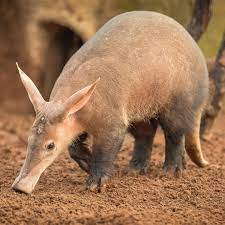When you go on safari, as with other places there are animals that while fascinating you can be almost certain you will not see.

I am not talking about Black leopards, or white lions – rare genetic mutations which are therefore not always present, and when they are, there might be one or two in the whole of an ecosystem. In recent times, when a black leopard was sighted, a British photographer flew out specifically to stake out the area it was in to get his shot. He did succeed, but spent a whole trip getting the picture (Will Burrard Lucas) flew to the part of Kenya where it had been sighted, and put up camera traps which caught the creature). These are almost impossible to see, as they tend to occur very rarely. The white Lions of Timbivati are very good for this private reserve as it is almost impossible to see wild white lions anywhere else.
No, the animals that are rarely seen (and perhaps for most would not feature on a list of 100 animals they would like to see) tend to be nocturnal. I am talking of animals like the Aardvark and the pangolin. Often these species are also extremely fussy eaters, which means that not only are they incredibly hard to see in the wild, but they are incredibly hard to keep alive in captivity – increasingly zoos are starting to get these fascinating animals, as the unfounded belief that pangolin scales can treat a variety of conditions has pushed all species nearer to extinction (so it is becoming increasingly necessary to have a captive population to back up the wild one).
In the UK, the only place that you can see an Aardvark is in Colchester zoo, where they have a group of them. Knowing this, Colchester zoo is one of those that I will visit as often as I get the chance, and spend a significant amount of time by the Aardvark burrow hoping to see them awake.
Our visit last week was incredibly lucky, as the Aardvarks had to be weighed, so they all had to wake up and be moved around. I hope to put together a video after the summer, with pictures of Aardvark burrows in the wild, and the animal in captivity. If I am very lucky, I will be able to add in some wild Aardvark pictures but this is very unlikely.
Either way, a video will be coming in the Autumn – to our youtube channel. Do subscribe so as to not miss it (there are many more videos in the pipeline) https://www.youtube.com/channel/UCsz9rwvtlpsdQgB-52CY-_w
This link will take you to our youtube channel.
We have 2 trips planned in the next few months. Later this week, I am travelling to Spain in the hope of seeing bears and wolves, and over August, my family are travelling to Kruger national park. Our aim is to film many videos during these trips, and be able to add greatly to what is listed on the channel.
